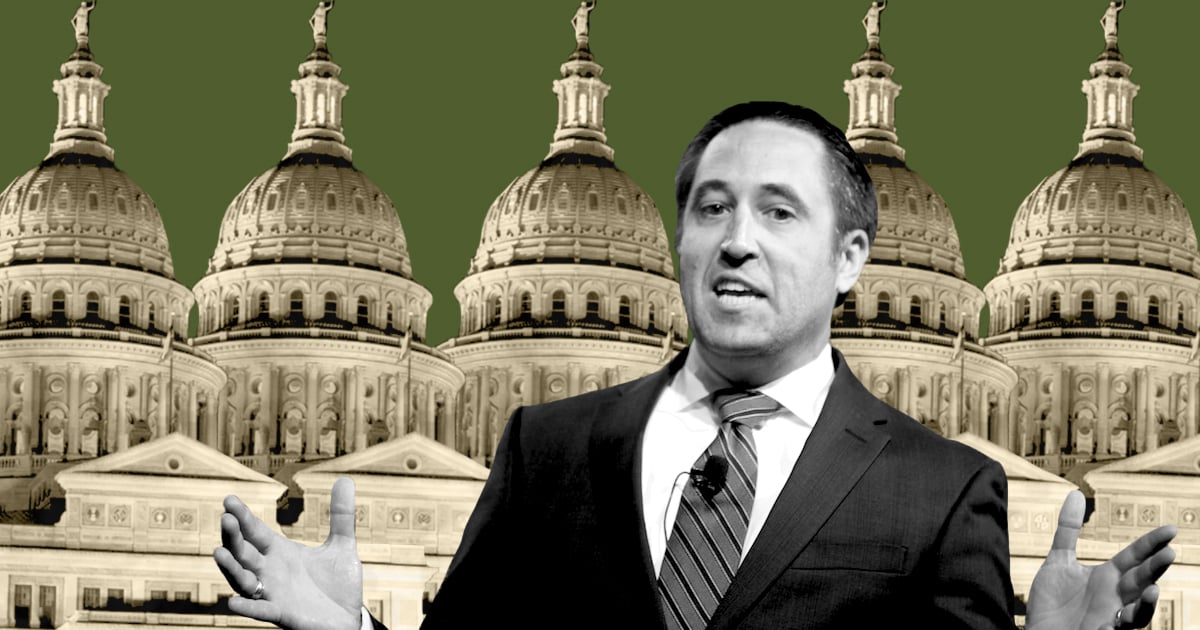Layoffs and Cutbacks: Rick Perry’s 2011 Education Record
Rick Perry helped make unprecedented cuts to public education. So why is no one talking about it?
Once upon a time, Rick Perry was all about public education. In his 2006 re-election campaign, he devoted an entire ad to his commitment. “I’m proud of Texas schools,” he says to the camera as he wanders through a classroom. “Since I became governor education funding has increased $9 billion.” He beams and stops next to a teacher. “Education is our future and my highest priority.”
This year, Perry helped cut that “highest priority” by an unprecedented $4 billion. Facing a $23 billion shortfall for over the next two years, the governor was adamant that the state budget get balanced through cuts. He pressured the Legislature against tapping Texas’ Rainy Day fund—around $9 billion the state saved up—to help soften the blows to services. When the House Appropriations chair offered his first draft of the budget, school districts were shocked at the proposed $10 billion cut. 100,000 public school employees could face layoffs warned one education expert.
Perry wasn’t concerned. He sent representatives from his office to encourage the House’s austere budget. He shrugged off the worries about mass firings and school closure. “The lieutenant governor, the speaker, their colleagues aren’t going to hire or fire one teacher, as best I can tell,” Perry told reporters. “That is a local decision that will be made at the local districts.” A local decision based on the state’s decision to underfund schools.
School districts across the state opened this week $4 billion underfunded. (The extra funding came thanks to a push from concerned senators.) The cuts are still unprecedented. It’s the first time since 1949, when Texas implemented its modern school finance system, that the state has decreased funding for education.
To cope, some districts are implementing fees for riding the bus or attending pre-k. Many are considering tax increases. At middle schools and high schools, many classrooms are more crowded. None of this is good news to parents.
Yet almost no one in the Republican field seems eager to criticize the cuts or Perry’s support for them.
In a Tea-Party-dominated GOP it’s unlikely that anyone’s going to earn points talking about the need for more spending and more programs. But in the past, education has always held a special status. Despite concerns about government spending and entitlement programs, free and quality education is rarely considered welfare or a hand-out—most have approached it as a right.
Additionally, the education cuts have serious job implications. Perry has cast himself as the “jobs candidate.” He points to incredible growth in Texas. But generally left unsaid is almost half of the job growth in the last two years came from education, health care and government sectors. With unprecedented cuts across the board, don’t expect to see that continue.
Furthermore, Texas already has a serious dropout problem and leads the country in residents over 25 without a high school diploma. Many of the cutbacks come to programs specficially geared to at-risk students, like initiatives to help test performance and mentoring programs. This isn’t a great recipe for employers looking for highly skilled workers. Texas already leads the country in minimum wage jobs.
It’s hard to imagine Perry’s support for such cuts won’t be a campaign issue, but of course it all depends on whether someone will actually raise the point.
In the meantime, I’m hoping the teacher in Perry’s 2006 ad still has a job.


